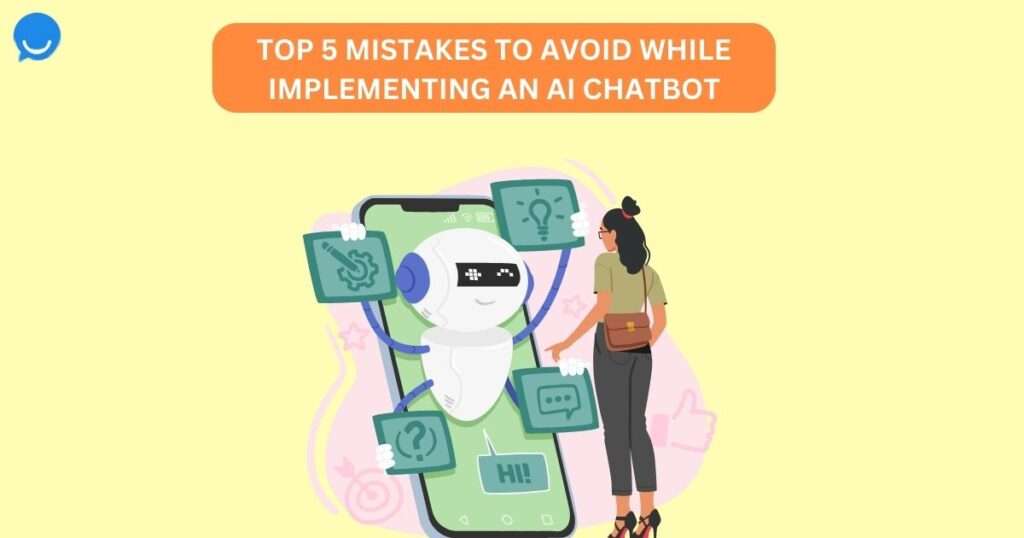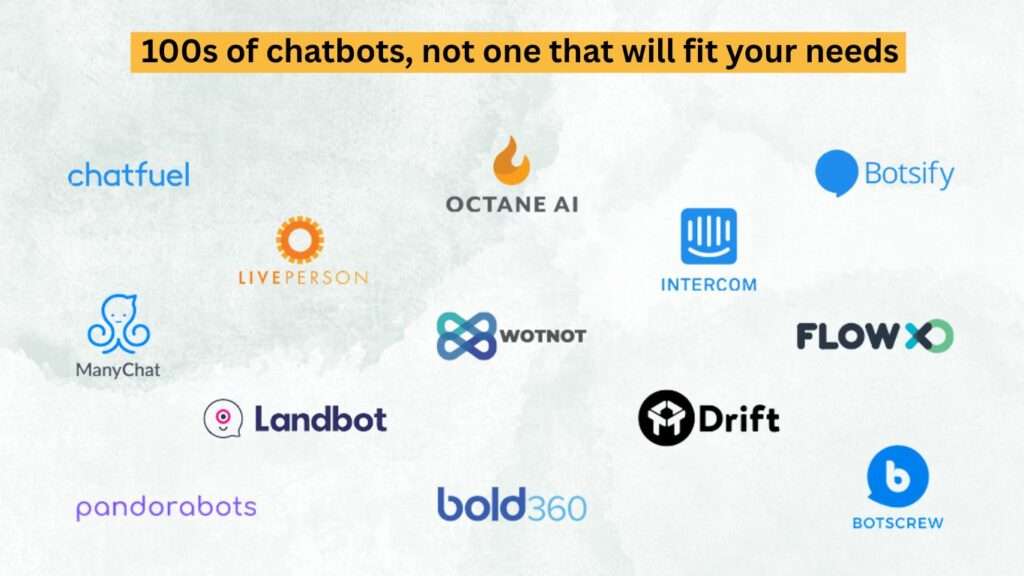We all know about AI. We all know about chatbots. Nothing new. Most of the websites out there are using it, but are they using it correctly? When implementing an AI chatbot, getting it right is the ultimate key. While chatbots can bring a massive change in various fields including customer service and sales, they can also backfire if not executed correctly.
Businesses often make mistakes in the process of chatbot implementation that cause issues in the effectiveness of chatbots. This leads to user frustration rather than user satisfaction. And you wouldn’t want that, for sure. To make sure you don’t fall into this trap, we are here to help you.
These are 5 major chatbot pitfalls that you wouldn’t want your website to fall into.

1. Lack of Clear Purpose and Objectives
Implementing a chatbot without a clear purpose is like launching a ship without a compass-it’s bound to get lost. Benjamin Franklin wasn’t wrong when he said- “If you fail to plan, you are planning to fail!”. A chatbot without defined objectives is directionless and can end up being more of a problem than a help. Users may encounter vague or very generic responses that fail to address their specific needs, leaving them both confused and dissatisfied.
How to Avoid This Mistake?
- Define Specific Goals: Determine the main function of your chatbot. Is it meant for customer support?or is it there to increase your sales and lead generation? Having a clear purpose helps in making the chatbot’s interactions even better and more effective.
- Align with Business Strategy: Do ensure that the chatbot’s objectives align with your overall business strategy. Both shouldn’t go in opposite directions. For example, if your goal is to enhance customer support, the chatbot should be designed to handle FAQs and offer quick solutions.
- Regular Review and Adjustment: As your business grows, so should your chatbot. Don’t forget to regularly review its performance and make necessary adjustments. Keep it aligned with the trends and your goals.
2. Poor User Experience Design
A chatbot is all about improving the user’s experience. If users find it difficult to navigate or interact with, they will quickly leave your website and go to another one. A poor user experience design may include things like a cluttered interface, unclear instructions, and robotic responses that lack a human touch. A well-designed UX is very important for keeping users engaged and satisfied.
How to Avoid This Mistake?
- Simplify Navigation: Chatbot’s primary purpose is to make your and user’s work easy. So make sure to design/use a chatbot that is easy to use. Include clear prompts and options so users know what to do next. The more easy and smooth the interaction, the more likely users will continue using it.
- Consistent Branding: This is an important point to take care of. The chatbot’s interface and tone should be consistent with your brand’s identity. They should not go in the opposite direction. This helps create a smoother experience for users and makes it easier for them to remember your brand.
- Craft Human-Like Responses: This is a known fact that users prefer interacting with a chatbot that feels conversational and relatable. That human touch is very important, because this is what will make you different from others. So, write responses that are friendly, empathetic, and supportive. This makes the interaction feel more human and engaging.
3. Insufficient Training and Updates
This is a very common mistake that people make during chatbot implementation. You cannot just buy a chatbot, implement it, and then forget about it. AI chatbots require continuous learning and regular updates to stay effective. If it is not regularly updated, it may become useless and fail to provide relevant information. This may eventually lead to users ending up getting outdated responses causing a lack of trust in the chatbot.
How to Avoid This Mistake?
- Regularly Update the Knowledge Base: This is a very important thing to keep in mind. Keep the chatbot’s knowledge base up-to-date with the latest information, including product updates, company policies, common user queries, etc. This ensures that the chatbot always has the most current data to answer user queries.
- Utilise Analytics for Improvement: Use analytics to monitor interactions and identify areas where the chatbot can be improved. Look for patterns in user behavior and queries to better the chatbot’s performance.
- Make use of Machine Learning: Make use of machine learning capabilities so the chatbot can learn from past interactions and improve over time. This allows the chatbot to adapt to user behavior and provide more accurate responses.
4. Over-reliance on Automation
Another chatbot pitfall in which people fall into is completely relying on AI for everything. While automation is one of the key features of a chatbot, relying solely on it can be a mistake. Not all queries can be handled by artificial intelligence. It’s “artificial” for a reason! Complex issues, emotional queries, or situations requiring human judgment need the involvement of humans. A chatbot that tries to handle everything on its own may end up providing inadequate responses, and frustrating users.
How to Avoid This Mistake?:
- Implement Escalation Protocols: Establish clear protocols for when and how the chatbot should transfer issues to humans. This ensures that complex or sensitive queries are handled appropriately.
- Recognize the Limits of Automation: Program the chatbot to recognize when a query is beyond its capabilities. And whenever such a case happens, make sure it is immediately transferred to the human representative. This not only improves the user experience but also builds trust in the chatbot.
- Balance AI and Human Interaction: Balance is the key. Use automation for day to day routine tasks, such as answering FAQs or booking appointments. But, always provide an option for users to connect with a human agent if needed.
5. Inadequate Error Handling
Last but not the least- Error Handling. It is an important aspect of the overall chatbot function. If the chatbot fails to understand a query or encounters an error, it should be able to handle the situation gracefully. Without proper error handling, users may feel frustrated. Causing a negative perception of the chatbot AND your website.
How to Avoid This Mistake?
- Effective Error Handling Mechanisms: Design the chatbot to provide helpful suggestions or alternatives when it doesn’t understand a query. This guides the user and prevents overall frustration.
- Offer Human Support: When the chatbot cannot resolve an issue, it should offer an option to connect with a human agent. This ensures that users always have a way to get their questions answered.
- Active Error Planning: Predict potential errors and plan how the chatbot will handle them. Pre-planning would always come in handy. This includes creating fallback responses and ensuring the chatbot can recover from errors in a way that continues to provide value to the user.
A well-implemented AI chatbot can be a valuable asset to any business helping in various fields. By avoiding the above-mentioned mistakes, you can create a chatbot that not only meets but exceeds user expectations.
Remember, a chatbot should be an extension of your brand that interacts with users in a way that is helpful and aligned with your business goals.




